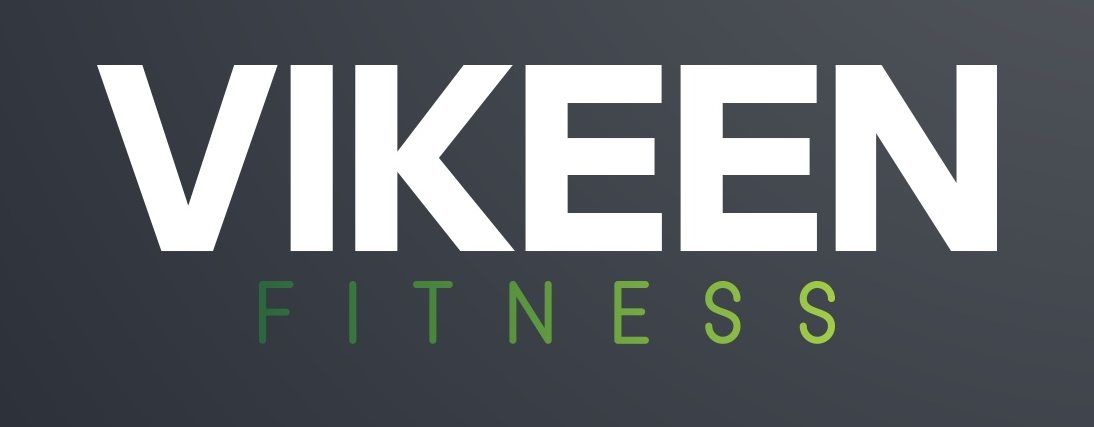
Surfing is
a highly skilled sport requiring great balance and judgment of waves. Surfing
is also an Olympic
sport.
Modern surfing as we know it today is thought to have originated in Hawaii. The history of surfing dates to c. AD 400 in Polynesia, where Polynesians began to make their way to the Hawaiian Islands from Tahiti and the Marquesas Islands. They brought many of their customs with them including playing in the surf on Paipo (belly/body) boards. It was in Hawaii that the art of standing and surfing upright on boards was invented.
Various European explorers witnessed surfing in Polynesia. Surfing may have been observed by British explorers at Tahiti in 1767. Samuel Wallis and the crew members of HMS Dolphin were the first Britons to visit the island in June of that year. Another candidate is the botanist Joseph Banks who was part of the first voyage of James Cook on HMS Endeavour, arriving on
Tahiti on 10 April 1769. Lieutenant James King was the first person to write about the art of surfing on Hawaii, when he was completing the journals of Captain James Cook (upon Cook's death in 1779).
In Herman Melville's 1849 novel Mardi, based on his experiences in Polynesia earlier that decade, the narrator describes the "Rare Sport at Ohonoo" (title of chap. 90): “For this sport, a surf-board is indispensable: some five feet in length; the width of a man's body; convex on both sides; highly polished; and rounded at the ends. It is held in high estimation; invariably oiled after use; and hung up conspicuously in the dwelling of the owner.” When Mark Twain visited
Hawaii in 1866 he wrote, "In one place, we came upon a large company of naked natives of both sexes and all ages, amusing themselves with the national pastime of surf-bathing."
References to surf riding on planks and single canoe hulls are also verified for pre-contact Samoa, where surfing was called fa'ase'e or se'egalu (see Augustin Krämer, The
Samoa Islands), and
Tonga, far pre-dating the practice of surfing by Hawaiians and eastern Polynesians by over a thousand years.
WHAT IS SURFING?
Surfing is a surface water sport in which an individual, a surfer (or two in tandem surfing), uses a board to ride on the forward section, or face, of a moving wave of
water, which usually carries the surfer towards the shore. Waves suitable for surfing are primarily found on ocean shores, but can also be found as standing waves in the open ocean, in lakes, in rivers in the form of a tidal bore, or in wave pools.
The term surfing refers to a person riding a wave using a board, regardless of the stance. There are several types of boards. The Moche of
Peru would often surf on reed craft, while the native peoples of the
Pacific surfed waves on alaia, paipo, and other such water craft. Ancient cultures often surfed on their belly and knees, while the modern-day definition of surfing most often refers to a surfer riding a wave standing on a surfboard; this is also referred to as stand-up surfing.
Another prominent form of surfing is body boarding, where a surfer rides the wave on a bodyboard, either lying on their belly, drop knee (one foot and one knee on the board), or sometimes even standing up on a body board. Other types of surfing include knee boarding, surf matting (riding inflatable mats) and using foils. Body surfing, in which the wave is caught and ridden using the surfer's own body rather than a board, is very common and is considered by some surfers to be the purest form of surfing. The closest form of body surfing using a board is a handboard which normally has one strap over it to fit on one hand. Surfers who body board, body surf, or handboard feel more drag as they move through the water than stand up surfers do. This holds body surfers into a more turbulent part of the wave (often completely submerged by whitewater). In contrast, surfers who instead ride a
hydrofoil feel substantially less drag and may ride unbroken waves in the open ocean.
Three major subdivisions within stand-up surfing are stand-up paddling, long boarding and short boarding with several major differences including the board design and length, the riding style and the kind of wave that is ridden.
In tow-in surfing (most often, but not exclusively, associated with big wave surfing), a motorized water vehicle such as a personal watercraft, tows the surfer into the wave front, helping the surfer match a large wave's speed, which is generally a higher speed than a self-propelled surfer can produce. Surfing-related sports such as paddle boarding and sea kayaking that are self-propelled by hand paddles do not require waves, and other derivative sports such as kite surfing and windsurfing rely primarily on wind for power, yet all of these platforms may also be used to ride waves. Recently with the use of V-drive
boats, Wakesurfing, in which one surfs on the wake of a boat, has
emerged. As of 2023, the Guinness Book of World Records recognized a 26.2 m (86 ft) wave ride by Sebastian Steudtner at Nazaré,
Portugal as the largest wave ever surfed.
During the winter season in the northern hemisphere, the North Shore of Oahu, the third-largest island of Hawaii, is known for having some of the best waves in the world. Surfers from around the world flock to breaks like Backdoor, Waimea Bay, and Pipeline. However, there are still many popular surf spots around the world: Teahupo'o, located off the coast of Tahiti; Mavericks,
California,
United
States; Cloudbreak, Tavarua Island, Fiji; Superbank, Gold Coast,
Australia.
OLYMPIC SPORT
In 2016 surfing was added by the International Olympic Committee (IOC) as an Olympic sport to begin at the 2020 Summer Olympics in
Japan. The first gold medalists of the
Tokyo 2020 surfing men and women's competitions were, respectively, the
Brazilian Ítalo Ferreira and the American from Hawaii, Carissa Moore.
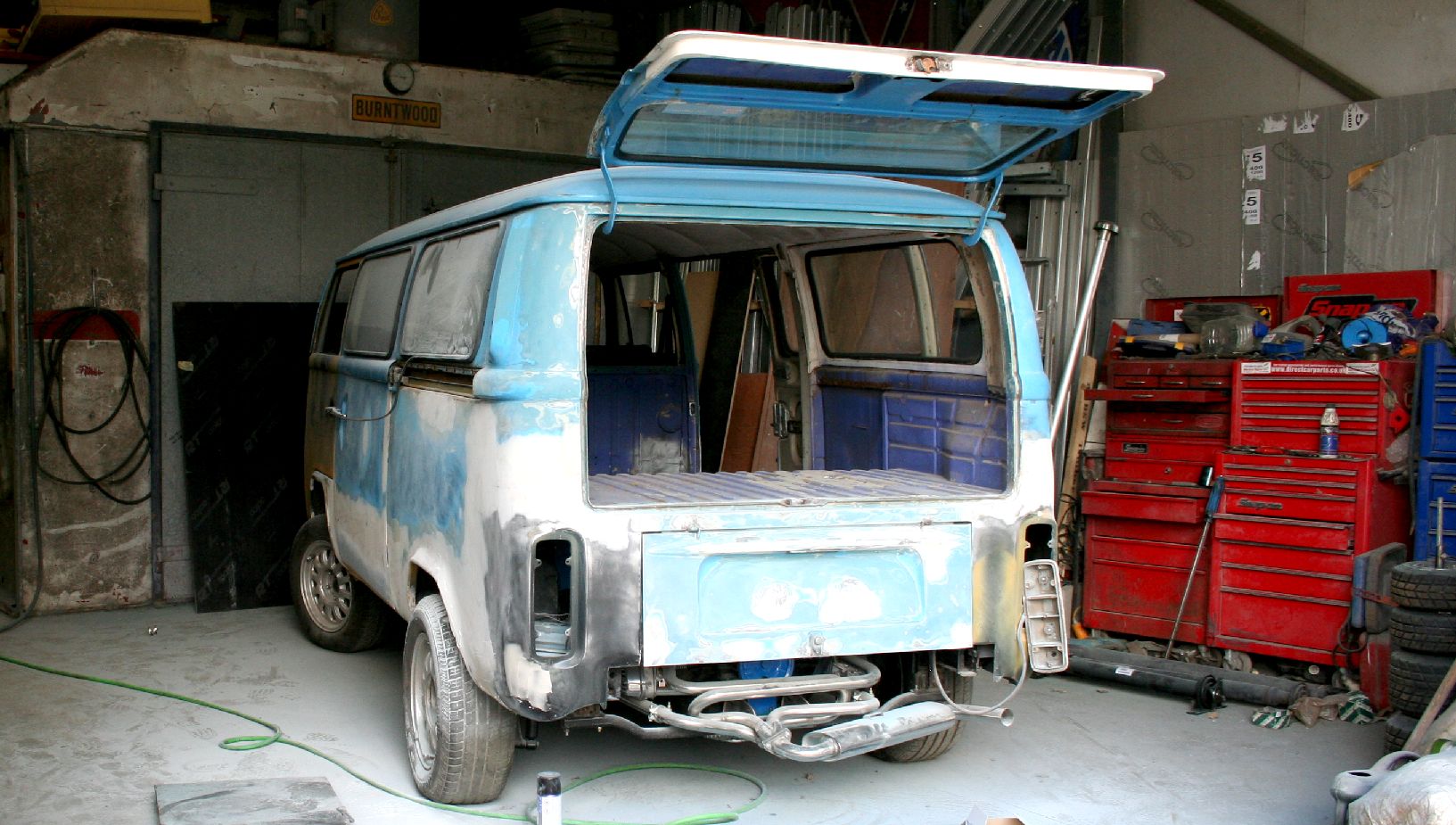
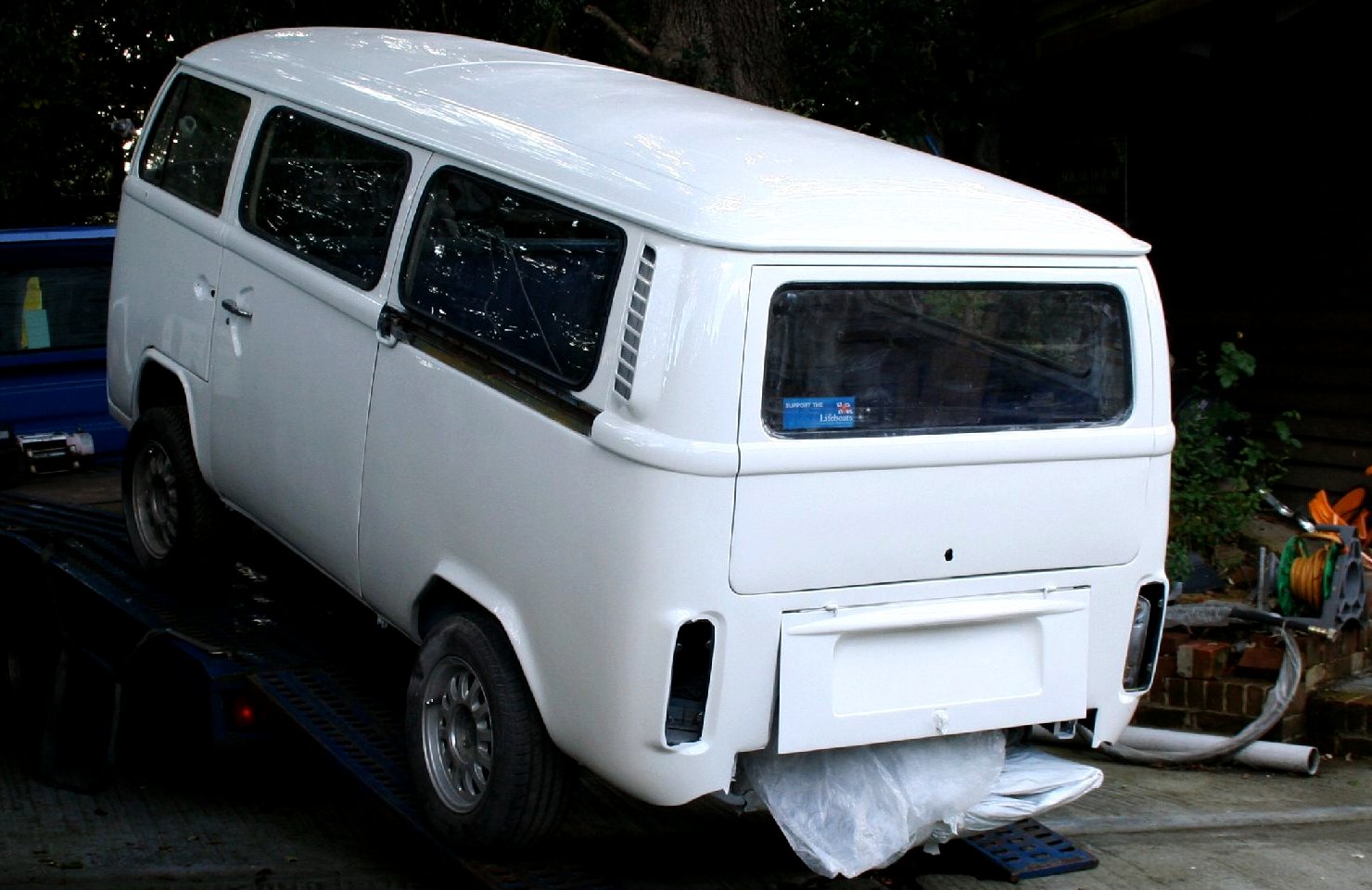
ICONIC
SURFING WAGON - Marion Watson's dream Volkswagen T2 was over forty years
old, and suffered the ravages of time as you can see from the top of
these two pictures (the van is rea). Fortunately, her husband trained as
an engineer in the British Army. Meaning he could fix engines and weld
the pants off most classic vehicle restorers. The result of a complete
overhaul taking several years, Finally Tim delivered her surfing bus
back to their home in the wilds of Herstmonceux,
famous for having the oldest electricity generating station in Europe.
Now a Museum.
Just
when the Tim thought his mechanical troubles were over, his son Jimmy,
decided he was going to build a giant hexapod robot and program it to be
Artificially
Intelligent. The programming was way out of his league, but the
General was more then pleased to teach his son how to weld
and fabricate steel frames using MIG welding
machines, and to TIG weld alloy tubes for the legs of his large walking
machine.
BIRLING GAP
In the fictional Christmas
story: Jimmy
Watson's Magic Dinobot, Jimmy's mother is a former surfing
enthusiast and champion of keeping the oceans clear of plastic waste. In
this original story being developed by Jameson Hunter and Cleaner Ocean
Foundation, Marion
Watson (a retired teacher) is married to General
Timothy Watson. She loves nothing more than to drive her beloved Volkswagen
camper van to Birling Gap, or Devon and Cornwall. The best surf sites
being at Newquay and Bude. But, locally to herself, Birling Gap near
Eastbourne, is also a fine location for getting out the board and
hanging five.
Look at any surfing guide to the UK and you will see that this stretch of coastline is just about the worst place to be if you want to surf.
Eastbourne is so far up the
Channel that it is very rare for any sizeable clean groundswell from weather systems pumping way out west. Conversely it is too far west to see any action from waves generated by storms doing their thing out in the
North
Sea. What we do get are massive, messy wind-swell monsters when it is blowing a south westerly gale right on our doorstep. Surfing these lumps is an acquired taste, sometimes preferable to the glassy lines that you might experience in the West Country. Marion is quite prepared make the 12 hour round trip to North Devon,
in her custom T2 VW surfing wagon to avoid being pummeled at Birling Gap, but the
Cliff top views are staggering.
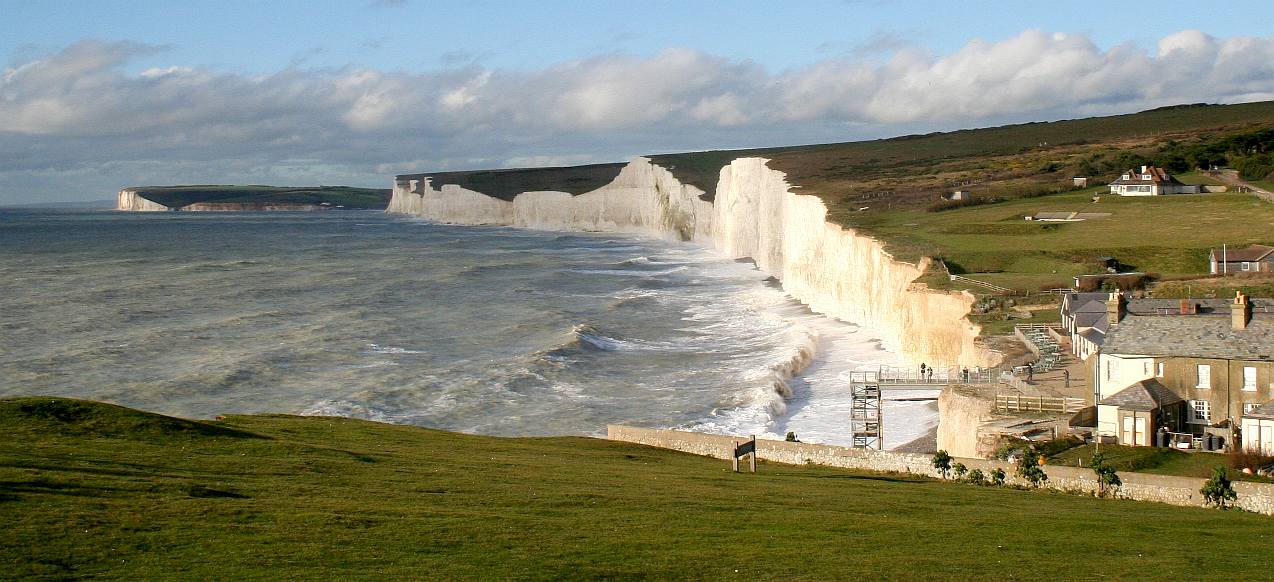
Birling Gap
The spiritual home of surfing on the south east coast is Birling Gap. This south-westerly facing beach picks up all the meagre groundswell that this coast has to offer. Situated where
Beachy Head meets the
Seven Sisters this has to be one of the most picturesque spots along the channel shoreline. The waves break over a chalk reef and it's surfable on all stages of the tide except for the hours around high tide when there can be a heavy
shore-break. Rich pickings are to be had just east of the steps from the Coastguard cottages, but there are sloppy seconds if you ply your trade in front of the steps over the sand or even slightly further west. It can be a bit embarrassing when coach loads of Chinese, German and Japanese students turn up and if you are there during some fleeting summer swell you might also encounter the odd naturist 'hanging loose' who might do better to keep it covered up.
Cuckmere Haven
You may encounter a fairly decent (mellow session) just west of the mouth of the
river in front of the more picturesque Coastguard Cottages on
Seaford
Head. But it is a mile walk back to the car park at the top of the Nature Reserve. One for the truly dedicated.
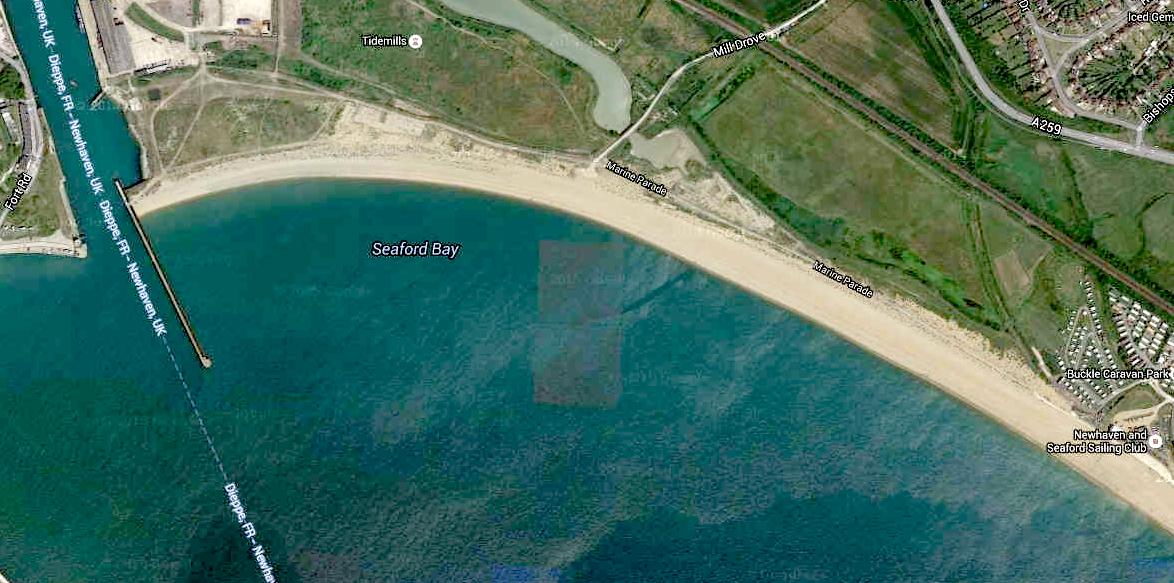
Tide Mills
Situated between Seaford and Newhaven there is a good expanse of groyne-less shoreline that is mainly sand around the hours of low tide. If you have cut your teeth on the golden sands of Cornwall, Devon or South Wales then his will be the nearest thing to that experience. As you drive along the A259 past Bishopstone look towards the sea and if you see a load of white builders vans you know that it is on (they tend to put off kitchen refits to skive off surfing). The first hazard is to negotiate the dogs mess in the car park. The next is to scurry across the railway line and squeeze through the kissing gates before you get mown down by the Brighton train. It will invariably be blowing a gale so carrying anything bigger than a thruster will be a real mission. It's best to wander further west towards Newhaven to gain a bit more shelter from the harbour arm. Don't go too close to the pier though because you could get caught in a rip or end up being dragged underneath. This area is also loaded with kite surfers.
BUDE
Bude and the surrounding area is home to some of Cornwall’s best surfing beaches. With a predominantly west-facing aspect, the beaches are exposed to the incoming Atlantic swells that wrap themselves around the North Cornish coastline.
Due to the popularity of the beaches most are lifeguarded too, which is always worth checking before entering the water. We’ve rounded up our five favourite beaches around Bude for you to take to the waves, with some breaks suitable for learners and some that only experienced surfers should attempt to paddle out in.
Summerleaze Beach
Summerleaze is a west-facing beach that picks up the Atlantic swell regularly brought to the North Cornish coastline. When it is too windy for most of the other surf spots on this stretch of coastline, Summerleaze beach can provide some fun waves for everyone, with suitable conditions for both experienced surfers and beginners.
The beach is lifeguarded over the summer months, and there are several nearby surf schools offering courses for complete novices or intermediates wanting to brush up on their skills. Choose from Big Blue Surf School, Bude Surfing Experience, and Raven
Surf.
Widemouth Bay
Stretching over a mile and a half, Widemouth Bay is the most popular surf break along the immediate coastline, with surfers of all abilities sharing the waves. This beach is perfect for learners, and is great for experienced surfers towards high tide.
In 2014, the beach was graded ‘excellent’ for its water quality from the Marine Conservation Society Good Beach Guide. Check conditions at the report and webcam, and for surf hire and lessons, choose from Outdoor Adventure or Freewave Surf Academy. The beach is patrolled by lifeguards every day between 30 April and 25 September.
Sandymouth
This beach faces west and works best with offshore conditions and is not recommended for beginners due to its potentially dangerous rips and currents with bigger waves, although RNLI lifeguards are present at the beach patrolling every day between 21 May and 25 September.
The beach is owned by the National Trust and has a car park nearby. From the car park to the beach, you must walk through a reasonably steep ravine and down some steps, so is not recommended for the less mobile. The beach also allows dogs year round, and has a seasonal cafe and toilets. For surf hire, visit Sandymouth Surf
School.
Northcott Mouth
When the surf is reasonably small, Northcott is suitable for beginners; however when it gets slightly bigger, rips can make it suitable only for experienced surfers. When the conditions are good, Northcott sees some big waves, so it’s always worth checking the forecast before entering the water.
During high tides, and particularly spring high tides, the sea can submerge rocks at the base of the cliffs, which can be very dangerous when surfing. At low tide the wreck of the SS Belem is revealed, so keep an eye out for that. This beach is lifeguarded every day between 4 July and 6 September, and a webcam and report is available to check conditions for the beaches either side of Northcott Mouth – Crooklets and Sandymouth – so will give an idea of what the surf looks like there. This is also a National Trust beach, with a small carpark above, and surf hire is only available from the beaches either side.
Crooklets
Crooklets is a short drive north along the coast from Bude and the place to be for experienced surfers who love a right. This break works well in easterly winds and on most tides due to being west-facing, however watch out for submerged rocks at high tide and occasional rips.
This beach has great facilities, with a large car park, a children’s play area, a skate park, a beach cafe and showers, and has lifeguards on duty every day between 6 May and 27 September. You can see what the waves are like via the report and webcam for Crooklets, and surf hire is available from the nearby Big Blue Surf School.
NEWQUAY
From south Fistral to low tide Lusty Glaze. Here are our best Newquay Beaches to surf.
Discover useful information about the most popular surf spots in our detailed guide to the best surfing beaches in Newquay. With over 9+ surfing beaches in and around Newquay, it helps to have a heads-up and some insider local knowledge on where to surf and when.
Understanding which Newquay beach works best depending on tides, wave forecast and your surfing ability is key to getting the most out of all Newquay’s famous surf scene.
Newquay is renowned for its incredible surfing beaches, each offering a unique experience. From the flat landscapes of Towan Beach, perfect for beginners, to the sun-drenched paradise of Great Western Beach, our guide covers the top spots where you can catch the perfect wave. Find out about wave quality, best surf conditions, and local tips to make the most of your surf sessions.
Here is a list of surfing beaches in Newquay:
- Fistral beach
- Towan
- Great Western
- Tolcarne
- Lusty Glaze
- Porth & Whipsiderry
- Watergate bay
- Crantock Beach & Polly Joke
GENERATING
WAVES
Swell is generated when the wind blows consistently over a large space of open water, called the wind's fetch. The size of a swell is determined by the strength of the wind, and the length of its fetch and duration. Because of these factors, the surf tends to be larger and more prevalent on coastlines exposed to large expanses of ocean traversed by intense low pressure systems.
Local wind conditions affect wave quality since the surface of a wave can become choppy in blustery conditions. Ideal conditions include a light to moderate "offshore" wind, because it blows into the front of the wave, making it a "barrel" or "tube" wave. Waves are left-handed and right-handed depending upon the breaking formation of the wave.
Waves are generally recognized by the surfaces over which they break. For example, there are beach breaks, reef breaks and point breaks.
The most important influence on wave shape is the topography of the seabed directly behind and immediately beneath the breaking wave. Each break is different since each location's underwater topography is unique. At beach breaks, sandbanks change shape from week to week. Surf forecasting is aided by advances in information technology. Mathematical modeling graphically depicts the size and direction of swells around the globe.
Swell regularity varies across the globe and throughout the year. During winter, heavy swells are generated in the mid-latitudes, when the North and South polar fronts shift toward the Equator. The predominantly Westerly winds generate swells that advance Eastward, so waves tend to be largest on West coasts during winter months. However, an endless train of mid-latitude cyclones cause the isobars to become undulated, redirecting swells at regular intervals toward the tropics.
East coasts also receive heavy winter swells when low-pressure cells form in the sub-tropics, where slow moving highs inhibit their movement. These lows produce a shorter fetch than polar fronts, however, they can still generate heavy swells since their slower movement increases the duration of a particular wind direction. The variables of fetch and duration both influence how long wind acts over a wave as it travels since a wave reaching the end of a fetch behaves as if the wind died.
During summer, heavy swells are generated when cyclones form in the tropics. Tropical cyclones form over warm seas, so their occurrence is influenced by El Niño and La Niña cycles. Their movements are unpredictable.
Surf travel and some surf camps offer surfers access to remote, tropical locations, where tradewinds ensure offshore conditions. Since winter swells are generated by mid-latitude cyclones, their regularity coincides with the passage of these lows. Swells arrive in pulses, each lasting for a couple of days, with a few days between each swell.
The availability of free model data from the NOAA has allowed the creation of several surf forecasting websites.
THE MOVES
Standup surfing begins when the surfer paddles toward shore in an attempt to match the speed of the wave (the same applies whether the surfer is standup paddling, bodysurfing, boogie-boarding or using some other type of watercraft, such as a waveski or kayak). Once the wave begins to carry the surfer forward, the surfer stands up and proceeds to ride the wave. The basic idea is to position the surfboard so it is just ahead of the breaking part (whitewash) of the wave, in the so-called 'pocket'. It is difficult for beginners to catch the wave at all.
Surfers' skills are tested by their ability to control their board in difficult conditions, riding challenging waves, and executing maneuvers such as strong turns and cutbacks (turning board back to the breaking wave) and carving (a series of strong back-to-back maneuvers). More advanced skills include the floater (riding on top of the breaking curl of the wave), and off the lip (banking off crest of the breaking wave). A newer addition to surfing is the progression of the air, whereby a surfer propels off the wave entirely up into the air and then successfully lands the board back on the wave.
The tube ride is considered to be the ultimate maneuver in surfing. As a wave breaks, if the conditions are ideal, the wave will break in an orderly line from the middle to the shoulder, enabling the experienced surfer to position themselves inside the wave as it is breaking. This is known as a tube ride. Viewed from the shore, the tube rider may disappear from view as the wave breaks over the rider's head. The longer the surfer remains in the tube, the more successful the ride. This is referred to as getting tubed, barrelled, shacked or pitted. Some of the world's best-known waves for tube riding include Pipeline on the North Shore of Oahu, Teahupoo in Tahiti and G-Land in Java. Other names for the tube include "the barrel", and "the pit".
Hanging ten and hanging five are moves usually specific to longboarding. Hanging Ten refers to having both feet on the front end of the board with all of the surfer's toes off the edge, also known as nose-riding. Hanging Five is having just one foot near the front, with five toes off the edge.
Cutback: Generating speed down the line and then turning back to reverse direction.
Snap: Quickly turning along the face or top of the wave, almost as if snapping the board back towards the wave. Typically done on steeper waves.
Blowtail: Pushing the tail of the board out of the back of the wave so that the fins leave the water.
Floater: Suspending the board atop the wave. Very popular on small waves.
Top-Turn: Turn off the top of the wave. Sometimes used to generate speed and sometimes to shoot spray.
Bottom Turn: A turn at the bottom or mid-face of the wave, this maneuver is used to set up other maneuvers such as the top turn, cutback and even aerials.
Airs/Aerials: These maneuvers have been becoming more and more prevalent in the sport in both competition and free surfing.[34] An air is when the surfer can achieve enough speed and approach a certain type of section of a wave that is supposed to act as a ramp and launch the surfer above the lip line of the wave, “catching air”, and landing either in the transition of the wave or the whitewash when hitting a close-out section.
Airs can either be straight airs or rotational airs. Straight airs have minimal rotation if any, but definitely no more rotation than 90 degrees. Rotational airs require a rotation of 90 degrees or more depending on the level of the surfer.
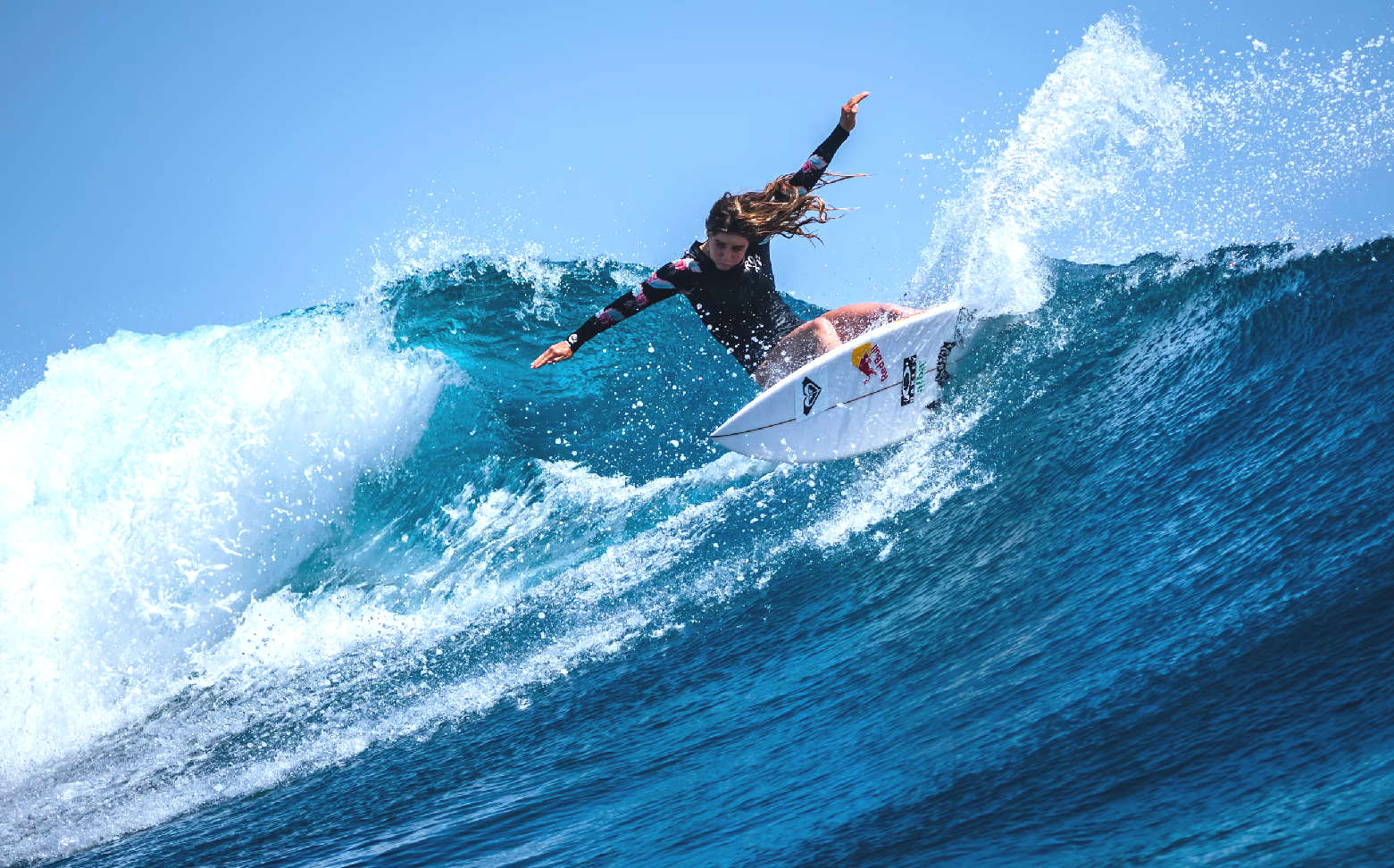
TYPES OF ROTATIONS
- 180 degrees – called an air reverse, this is when the surfer spins enough to land backwards, then reverts to their original positional with the help of the fins. This rotation can either be done frontside or backside and can spin right or left.
- 360 degrees – this is a full rotation air or “full rotor” where the surfer lands where they started or more, as long as they do not land backwards. When this is achieved front side on a wave spinning the opposite of an air reverse is called an alley-oop.
- 540 degrees – the surfer does a full rotation plus another 180 degrees and can be inverted or spinning straight, few surfers have been able to land this air.
- Backflip – usually done with a double grab, this hard to land air is made for elite-level surfers.
- Rodeo flip – usually done backside, it is a backflip with a 180 rotation, and is actually easier than a straight backflip.
-Grabs – a surfer can help land an aerial maneuver by grabbing the surfboard, keeping them attached to the board and keeping the board under their feet. Common types of grabs include:
* Indy – a grab on the surfers inside rail going frontside, outside rail going backside with their backhand.
* Slob – a grab on the surfers inside rail going frontside, outside rail going backside with their front hand.
* Lien – A grab on the surfers outside rail frontside, inside rail going backside with their front hand.
* Stalefish – A grab on the surfers outside rail frontside, inside rail backside with their backhand.
* Double grab – A grab on the surfers inside and outside rail, the inside rail with the backhand and the outside rail with the front hand.

LEARNING TO SURF
Many popular surfing destinations have surf schools and surf camps that offer lessons. Surf camps for beginners and intermediates are multi-day lessons that focus on surfing fundamentals. They are designed to take new surfers and help them become proficient riders. All-inclusive surf camps offer overnight accommodations, meals, lessons and surfboards. Most surf lessons begin with instruction and a safety briefing on land, followed by instructors helping students into waves on longboards or "softboards". The softboard is considered the ideal surfboard for learning, due to the fact it is safer, and has more paddling speed and stability than shorter boards. Funboards are also a popular shape for beginners as they combine the volume and stability of the longboard with the manageable size of a smaller surfboard. New and inexperienced surfers typically learn to catch waves on softboards around the 210 to 240 cm (7 to 8 ft) funboard size. Due to the softness of the surfboard the chance of getting injured is substantially minimized.
Typical surfing instruction is best-performed one-on-one, but can also be done in a group setting. Post-COVID, there's been a shift towards online and land-based surf coaching and training. Online surf coaching is allowing surfers to learn at their own pace and convenience from anywhere. Land-based training, such as skateboard simulations, offers a way to practice maneuvers repeatedly, refining techniques with the guidance of professional coaches either in person or remotely using video analysis apps. The most popular surf locations offer perfect surfing conditions for beginners, as well as challenging breaks for advanced students. The ideal conditions for learning would be small waves that crumble and break softly, as opposed to the steep, fast-peeling waves desired by more experienced surfers. When available, a sandy seabed is generally safer.
Surfing can be broken into several skills: paddling strength, positioning to catch the wave, timing, and balance. Paddling out requires strength, but also the mastery of techniques to break through oncoming waves (duck diving, eskimo roll also known as turtle). Take-off positioning requires experience at predicting the wave set and where it will break. The surfer must pop up quickly as soon as the wave starts pushing the board forward. Preferred positioning on the wave is determined by experience at reading wave features including where the wave is breaking. Balance plays a crucial role in standing on a surfboard. Thus, balance training exercises are good preparation. Practicing with a balance board, longboard (skateboard), surfskate or swing board helps novices master the art of surfing. However, it's important to note that these land-based training methods have faced criticism within the surf coaching community. Concerns include the potential for developing poor surfing style and habits, such as excessive wiggling, due to training on flat surfaces which do not accurately mimic the dynamic nature of ocean waves.
To address these limitations, training in a skate bowl is recommended. Skate bowls can offer a more realistic simulation of the centrifugal forces experienced while surfing. This type of training helps in developing better control and style by replicating the curved, wave-like shapes and motions surfers encounter in the water. Integrating skate bowl training can provide a more comprehensive preparation for the surfing experience, balancing the benefits of basic balance training with the nuances of wave dynamics.
The repetitive cycle of paddling, popping up, and balancing requires stamina and physical strength. Having a proper warm-up routine can help prevent injuries.
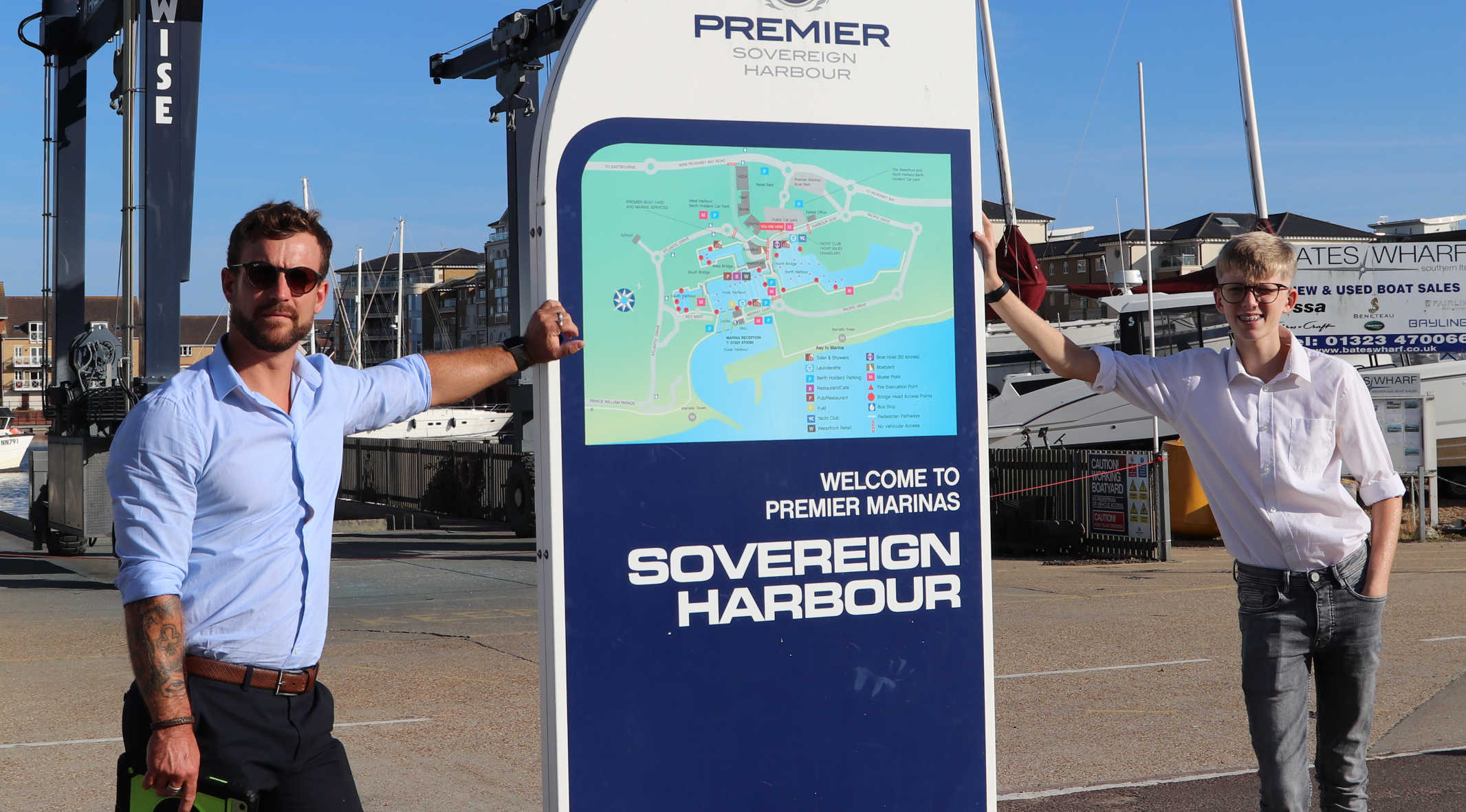
TEAM
ELIZABETH SWANN - A different kind of water sport: Terry and Ryan are team members of the Elizabeth Swann,
JVH2, hydrogen powered ocean racing trimaran.
A boat designed to challenge the diesel
record, to achieve a circumnavigation
in under 80
days - as per the famous Jules Verne novel. Terry says: The fitness fundamentals for sailors are aerobic endurance and muscle
strength is much the same as for most water sports. Diet is very
important, linked to a good exercise regime. Terry is a vegan and
personal trainer. He has
never been fitter and stronger, than when changing to a no-meat dietary
plan. Their team are looking for an experienced skipper on the south coast of
England, for an attempt at, and to set a Jules
Verne zero emission record, aiming for a boat in the water by 2024 - the
150th anniversary of Verne's prediction that H2 would be the fuel of the
future. Contact
the Cleaner Ocean Foundation for more information.
QUOTES
“Paddling requires a combination of flexibility and strength and can sometimes be tough on the body. To train effectively and compete long term whilst hopefully avoiding injury it is not purely about time on the water. For me training in the gym and mobility/flexibility work are essential to keep my body healthy and happy and ensure I can kayak for the rest of my life”
- Ottilie Robinson-Shaw
“Over the years I’ve realised more and more the importance and benefits of doing some specific training for my sea kayaking. Initially this was for performance (to go faster, longer and bigger) and lately it has been for injury prevention, injury management and to ensure I can keep paddling for many years to come.”
- Doug Cooper
“I realised a few years ago that my personal fitness was the missing link with my paddling and if I wanted to improve on the water, I needed to put more work in off the water. So I set my focus to improving my fitness through daily running whilst maintaining my strength with regular resistance band exercises. The results have been really dramatic and I feel like I’m flying when I’m out in a boat now.”
- Chris Brain
“Fitness is so important for a number of reasons. Firstly, it helps maintain good muscle balance essential in preventing problems with posture. It can lead to an increase in performance, but it can also enhance your experience in a recreational context as well; longer more enjoyable days on the water in more challenging places. The fitter you are the more effective you’re going to be.”
- Ken Hughes
PREPARING
FOR YOUR CHOSEN WATER SPORT
Most water sporting enthusiasts don’t need an intensive exercise regime to
enjoy their chosen sport, which tends to keep you fit and active
stand-alone. That said, strength and endurance can be really beneficial when you’re spending
a lot of time on, or in the water - and give you the endurance edge over other teams in, for example, competitions, when you will need a far higher level of power and endurance.
Especially swimmers and rowers.
The type of water sport you love will impact the type of training you need. It is specific to your
expectations. For example, leisure canoeing and scuba divers may not need to be ocean athletes. But it pays to keep your body in good condition, to be able to meet
any challenges rivers
and seas can throw at
you, and keep your mind alert to changing conditions, when the
opportunity to build up stamina during sporting activities is limited,
those exertions rather draining reserves.
Diet is important, to help you stay in shape, and to build up your stamina before embarking on your
water based adventures. Water being one of the most important
ingredients for life
on planet earth.
Exercise and diet is thus interlinked, especially for those who are climate
conscious, perhaps contemplating a pescatarian,
vegetarian, or most demanding of all, a
vegan diet while afloat.
When you can’t get out or in the water, try to work on your fitness at home instead. It is hard to stay in shape during
off-seasons, with high calorie meals during winter celebrations, that pile on the pounds. Making it all the more difficult to stay fighting fit when it’s time to get back
to your water sport.

YOUTH
OCEAN AMBASSADOR - Ryan is the youngest member of the Elizabeth Swann
team. He is coached in fitness matters by Terry, a seasoned vegan, having
weaned himself off meats over a year ago. Ryan has been attending
exhibitions and events for many
years. Often helping to man the stands at events where (for example) the
SeaVax
proof of concept vessel was on
display.
WATER
SPORTS A - Z
Canoeing
Diving (high)
Kite Surfing
Kayaking
Olympics Games
Rowing
Scuba Diving
Surfing
Swimming
Water Polo
Water Skiing
Whitewater Rafting
Yachting
The
stronger you become both
mentally and physically, the better you will become at coping with the stresses associated with competition, if that is your aim. You need to be sharp, prepared and capable in order to win competitions.
Especially when competing in the Olympic
Games.
If you want to improve your general fitness, you don't need to be quite so disciplined and focused. But, it pays to make the effort when you can.
So think about your health, diet and exercise, for which you will see
results, and being healthier, is one way of remaining youthful and
living longer.
If it was easy, then everyone would be doing it.
